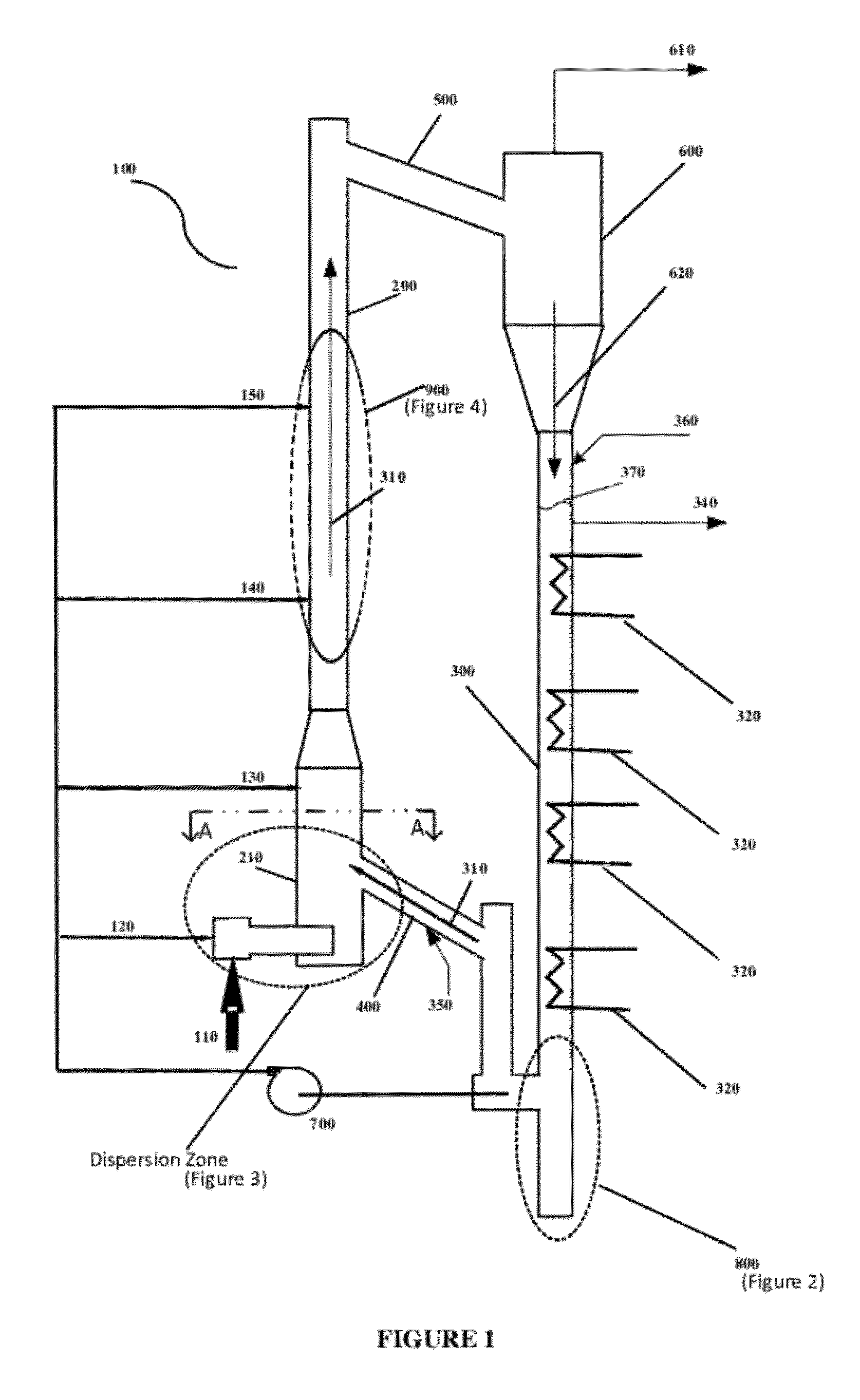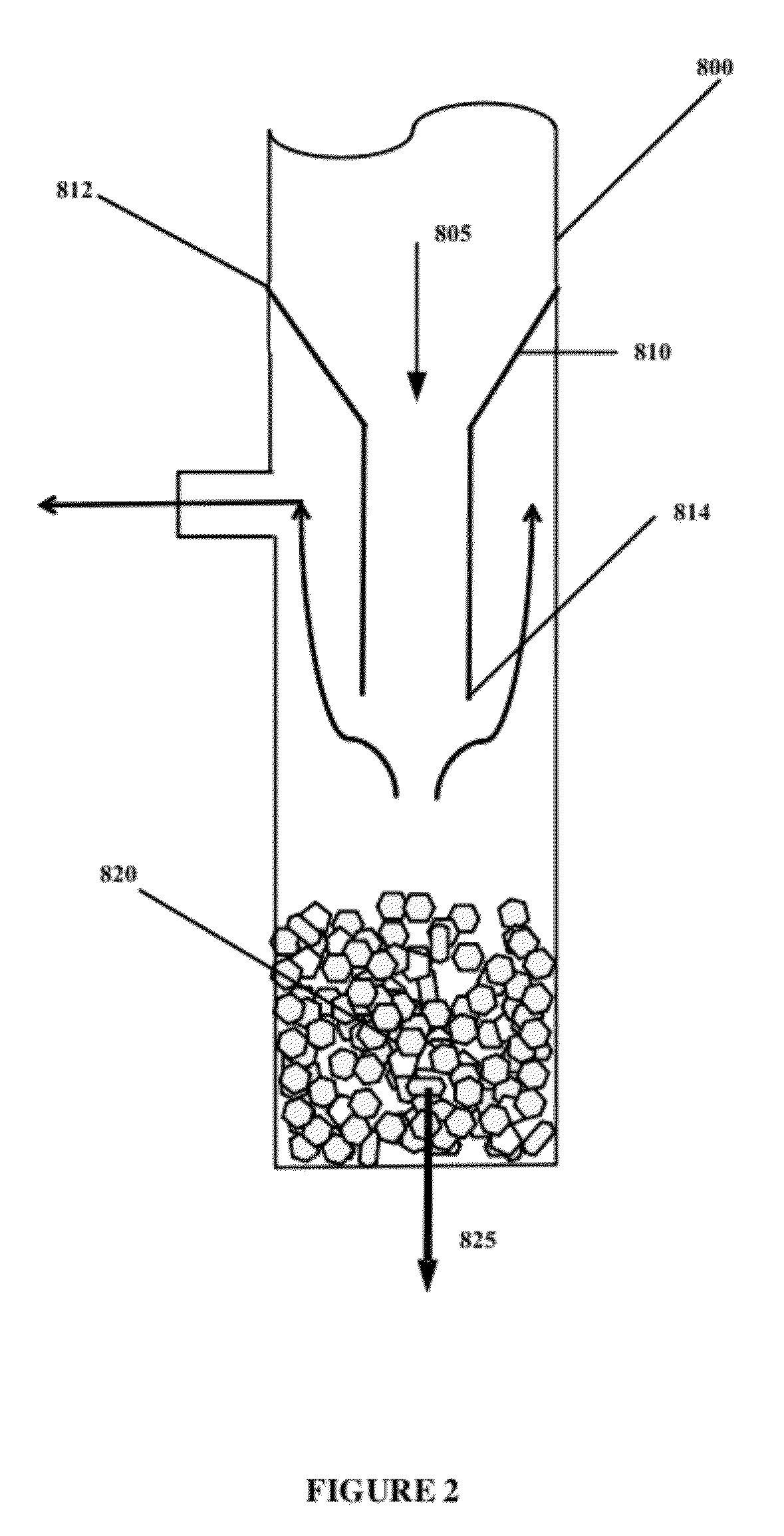Dispersed Bubble Reactor For Enhanced Gas-Liquid-Solids Contact And Mass Transfer
a gas-liquid solids and reactor technology, applied in the direction of separation processes, products, chemical/physical/physicochemical processes, etc., can solve the problems of not being able to achieve at least 90% cosub>2 /sub>capture efficiency, and cannot handle large volumes of gas, etc., to achieve the effect of steady operating temperatur
- Summary
- Abstract
- Description
- Claims
- Application Information
AI Technical Summary
Benefits of technology
Problems solved by technology
Method used
Image
Examples
example
[0102]Described below is one non-limiting example of an exemplary embodiment of the disclosure. None of the descriptions, ranges, or other information in this example limit the scope and operation of the present invention. The hydrodynamics of the DBR riser in FIG. 1 was tested up to 480 pounds per square inch gauge (psig) and by varying the riser superficial gas velocities from 3 to 35 ft / s. The DBR operation was characterized using pressure drop, gas hold-up, liquid circulation rates, and flow regimes. The tests showed that using the static head in the standpipe as the driving force, the circulating liquid and the gas stream entering the riser could produce a stable dispersed bubble flow regime in the riser with the creation of a large interfacial area for gas-liquid contact.
[0103]For a particular pilot test apparatus, the liquid circulation rate varied with the gas flow rate in the riser and reached a maximum at 10 ft / s, as predicted. The bulk density in the riser was in the rang...
PUM
| Property | Measurement | Unit |
|---|---|---|
| velocity | aaaaa | aaaaa |
| velocity | aaaaa | aaaaa |
| size | aaaaa | aaaaa |
Abstract
Description
Claims
Application Information
 Login to View More
Login to View More - R&D
- Intellectual Property
- Life Sciences
- Materials
- Tech Scout
- Unparalleled Data Quality
- Higher Quality Content
- 60% Fewer Hallucinations
Browse by: Latest US Patents, China's latest patents, Technical Efficacy Thesaurus, Application Domain, Technology Topic, Popular Technical Reports.
© 2025 PatSnap. All rights reserved.Legal|Privacy policy|Modern Slavery Act Transparency Statement|Sitemap|About US| Contact US: help@patsnap.com



